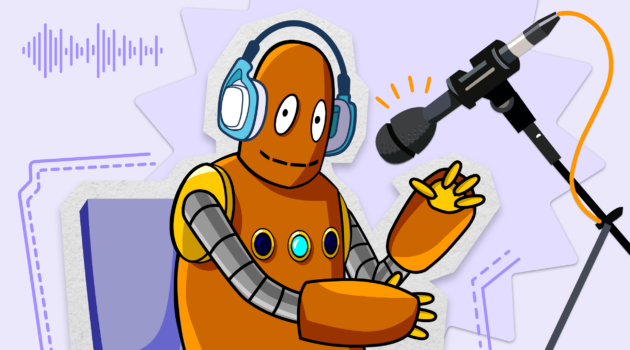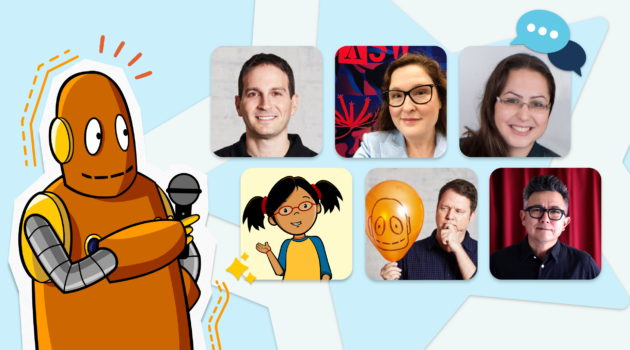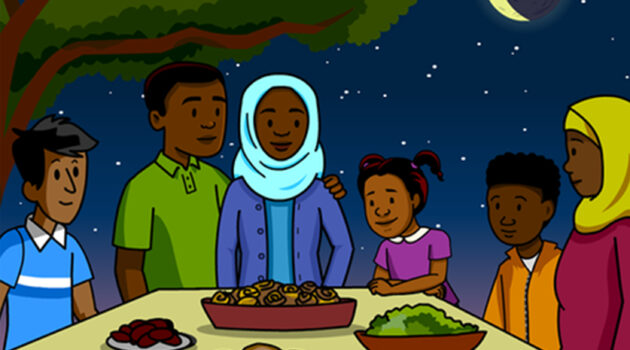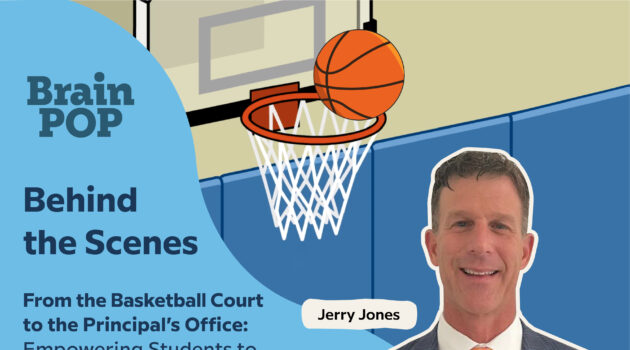Behind the Scenes
How Animator Alisa Harris-Norico Brings BrainPOP Movies to Life
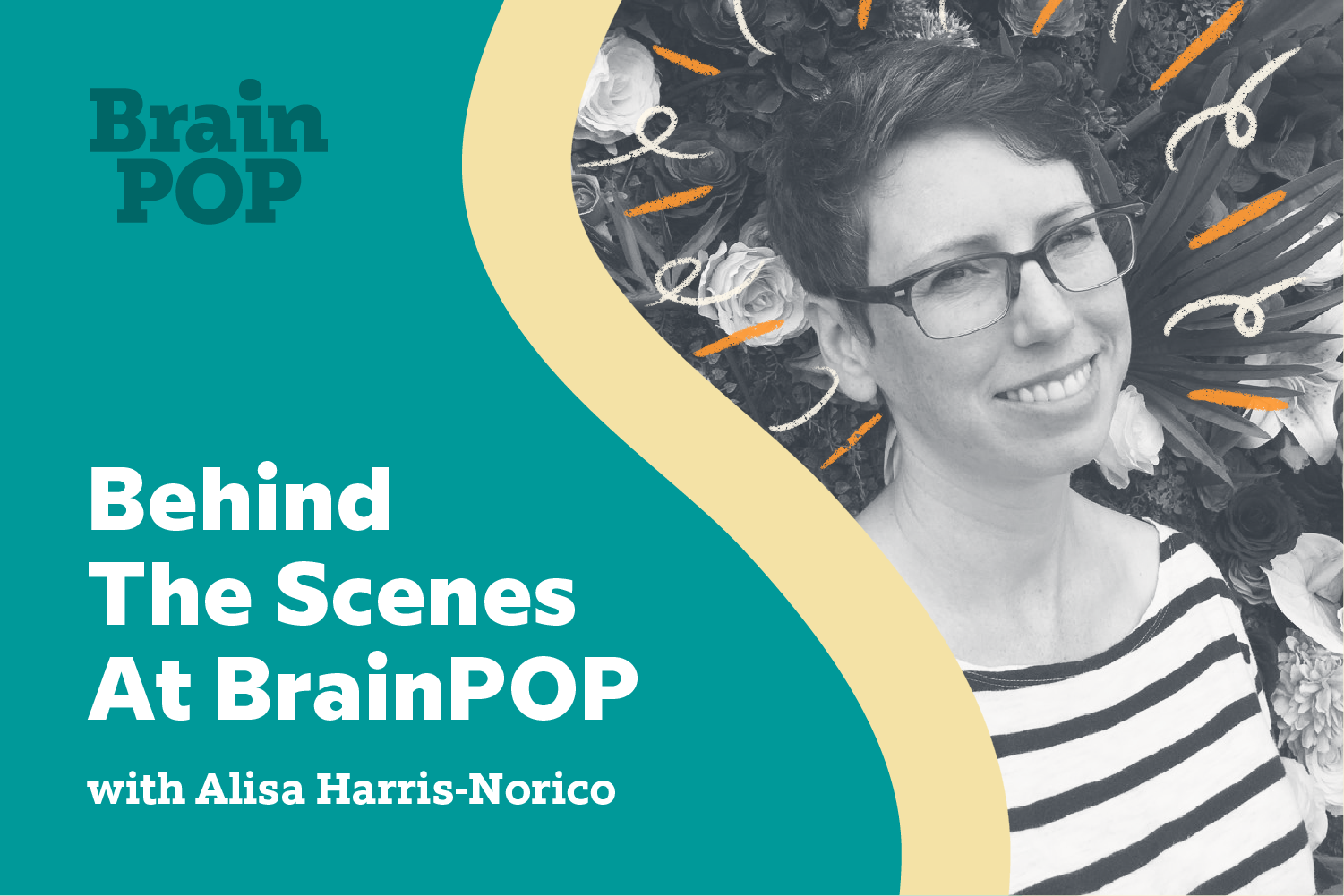
Alisa Harris-Norico is one of our incredibly talented animators here at BrainPOP. She’s also an illustrator, comic artist, and all-around creative whiz!
A graduate of the School of Visual Arts in New York with a degree in Traditional (2D) Animation, Alisa began working as an animator at BrainPOP in January of 2016. Since then, she has been instrumental in animating our educational movies, including designing Nat, BrainPOP’s newest character.
In a wide-ranging conversation, we picked Alisa’s brain on what it’s like to work as an animator, how she got started in the art field, her favorite BrainPOP projects, and much more. Read on for excellent advice for aspiring artists and fascinating insights into the BrainPOP movies that have been so beloved by over 300 million learners worldwide.
(And tell us: What else do you want to know about BrainPOP? Drop us a line!)
What has been your favorite topic to animate, and how did you research for this movie?
I was excited to work on the Mummies movie update and did some independent research for it. In 2018, there was a day where our office was evacuated due to a steam incident nearby, and I ended up going to the the Metropolitan Museum of Art for the afternoon.
I went into the Egyptian wing to take some photos, and sat and drew from their collection. I wanted to try a different style for the scenes where the mummification process was explained, so I used some of my additional research to mock-up images in Photoshop. The idea was to have these scenes look like they were painted onto papyrus. The editorial team liked what I did, so the final version is pretty close to my style frames.
Here’s a photo I took at the Met of some papyrus scrolls to use as reference:
Here are the Photoshop style frames:
And the final art in Adobe Animate:
What was the hardest topic for you to animate?
The movie on particle accelerators was one of the most difficult. I like to make sure I understand the script well enough to illustrate all the concepts, which meant I had to understand how particle accelerators work!
There were technical drawings of large machines in that one, as well as more abstract concepts that were difficult to figure how to portray correctly. I had several conversations with Jon Feldman, our Editorial Director, and the editorial team who wrote the script, as well as some technical help from our Senior Art Director, Del Almeida.
Learning new information about so many different topics is one of the most interesting parts of my job.
Has there been a sight gag or scripted joke you were pretty pleased with yourself about?
After reading the script for Women’s Suffrage, I sent this sketch to the editorial team of my idea of what Moby could look like as a poll worker:
I was inspired by my local polling place in Queens, New York, where the ladies at my District table always wore cat shirts and my cat tote bag always sparked a conversation.
I made comics about my two gray cats before I started working at BrainPOP, and they still make it into the background of movies I work on. This design got the green light, so it ended up in the final movie:
I was also pretty pleased with this deadpan moment from near the end of Women’s Suffrage where Moby half-heartedly throws confetti when women FINALLY get the right to vote:
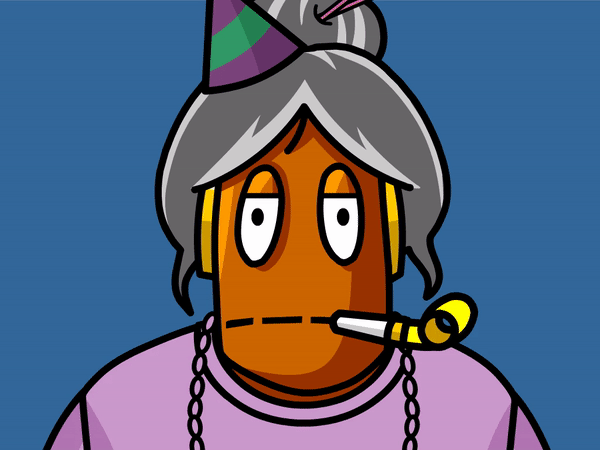
How have you made an impact on the art style here at BrainPOP?
I was excited to work with some of the other artists on creating one of our newest characters, Nat. I designed most of her main outfit, her camp T-shirt, and additional hairstyles.
Here’s Nat:
This part doesn’t sound as exciting, but I also made our extensive hand library more consistent, so now the animators have hundreds of different hand poses to choose from while we’re animating.
Lastly, I got to design some new and more diverse background characters for Make-a-Movie, which was a fun assignment.
Is there a topic you’d love to animate that you haven’t been able to yet?
I’ve always had an interest in anthropology, archaeology and Indigenous history, so I’m excited to be working on an update of our American Indians movie. The script is still being updated, but it will be a survey of different Native American cultural traditions throughout North America.
Have you always worked in the art field?
No! In high school, I worked summers as a waitress in a pizza restaurant and as a lifeguard.
The animation industry wasn’t doing well when I graduated from college, so I’ve worked as a bookseller at independent bookstores, in customer service at a health insurance company, and even a retail job at The Container Store.
I was able to get small freelance art and animation jobs on the side and eventually was able to expand my network of contacts to get more regular work in the animation industry. It wasn’t always easy, but I’m glad I stuck with it.
Did you have any teachers who inspired or encouraged you to pursue art professionally? If so, how?
I still remember a tutorial on how to draw holly leaves from my second grade teacher, Mrs. Ruch. She encouraged my creativity in her class, which led me to taking art lessons outside of school. Starting around fourth grade, I began taking colored pencil and watercolor classes at the studio of a local painter, Sue Hand. She still teaches students of all ages today, and I chose Kutztown University partially because that’s where she studied!
While at Kutztown, I took an experimental animation class with Dr. Thomas Schantz. He encouraged me to transfer to the animation program at SVA where another of his students had studied. It was initially scary to move to “the big city” by myself, but I met lots of friends and mentors at SVA who helped me to get work in the animation field.
What skills have been important for you to learn in your field?
Being able to draw is definitely a foundation of working in the arts. Learning to embrace technology is also important. When I was in school, we were mostly animating on paper, and a lot of the digital programs were still evolving. It wasn’t until after I graduated that I really learned the programs that I’ve been using ever since, mainly Adobe Animate and Photoshop. Now there are animation apps you can use on a phone or tablet!
Some other skills that are helpful are being organized, a good communicator, a team player and generally nice person since you will likely have to work with others, and no one wants to work with a jerk.
Tell us about your other art! You draw comics, right?
I do! I started making comics when I was between jobs to keep myself busy. As a kid, I always liked reading newspaper comics like Calvin and Hobbes and Peanuts and took a cartooning class one summer. My entrance essay to SVA was actually in comic form! I didn’t think I’d be able to have much of a career in comics (this was before graphic novels became huge), so I focused on animation instead.
In the past decade, I ended up self-publishing a bunch of comics about my two cats, some short stories about living in New York City, and step-by-step vegetarian recipes. I’ve also illustrated some books (All Cat Wants for Christmas, All Dog Wants for Christmas, and Dog Training for Kids), and was the colorist for the Stratford Zoo Midnight Revue series from First Second. You can find my comics and illustrations on my website, Cooking Up Comics.
What advice would you give people interested in pursuing a career in your field?
Keep practicing your drawing skills and start a sketchbook if you haven’t already. Observe everything around you and ask questions about how things move or the shapes that make up an object.
There are actually lots of different jobs within animation aside from animating; you can write scripts, draw storyboards, design characters, backgrounds and props for the characters to interact with, work as a voice-over artist or a sound engineer, an editor who puts all the pieces together, or a production coordinator to make sure everything stays on schedule.
If art or animation is something you really want to do, you’ll figure out a way to make it happen. Keep an open mind on how you might use your drawing skills in different jobs. I’ve done some book illustration and coloring work for comics when it was difficult to find work in animation. There will always be new technology and maybe jobs that haven’t even been invented yet!


